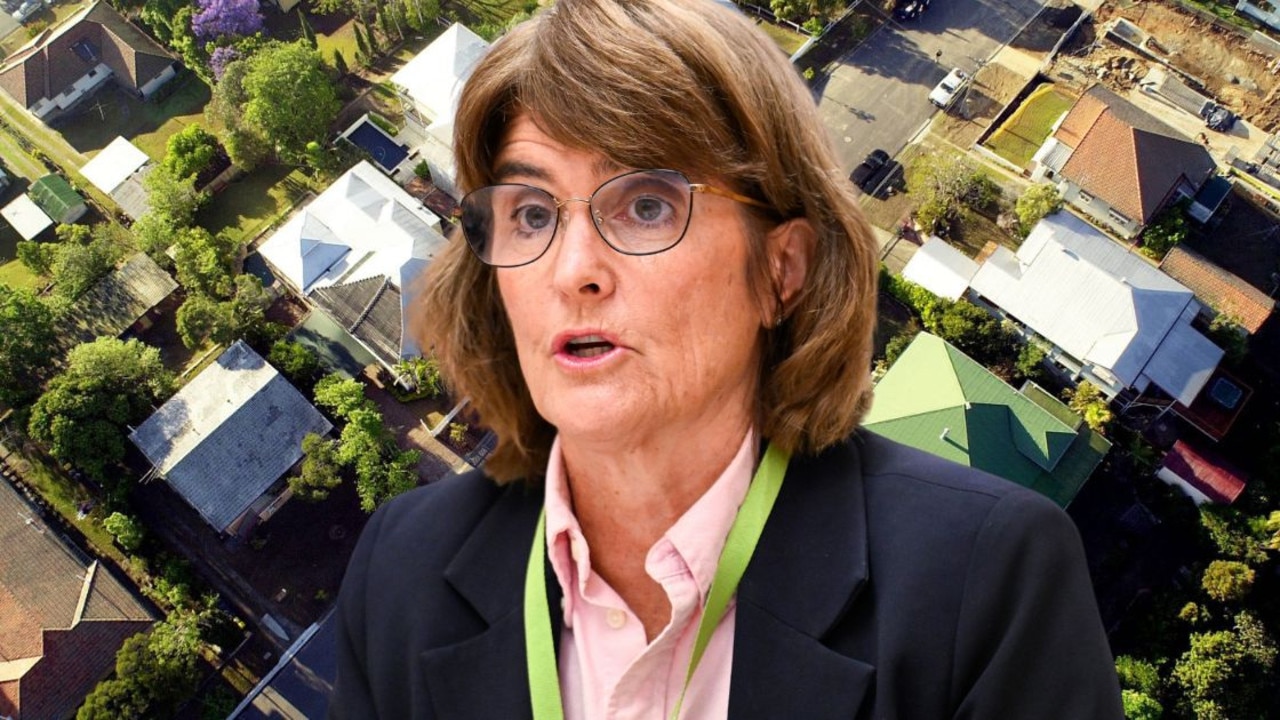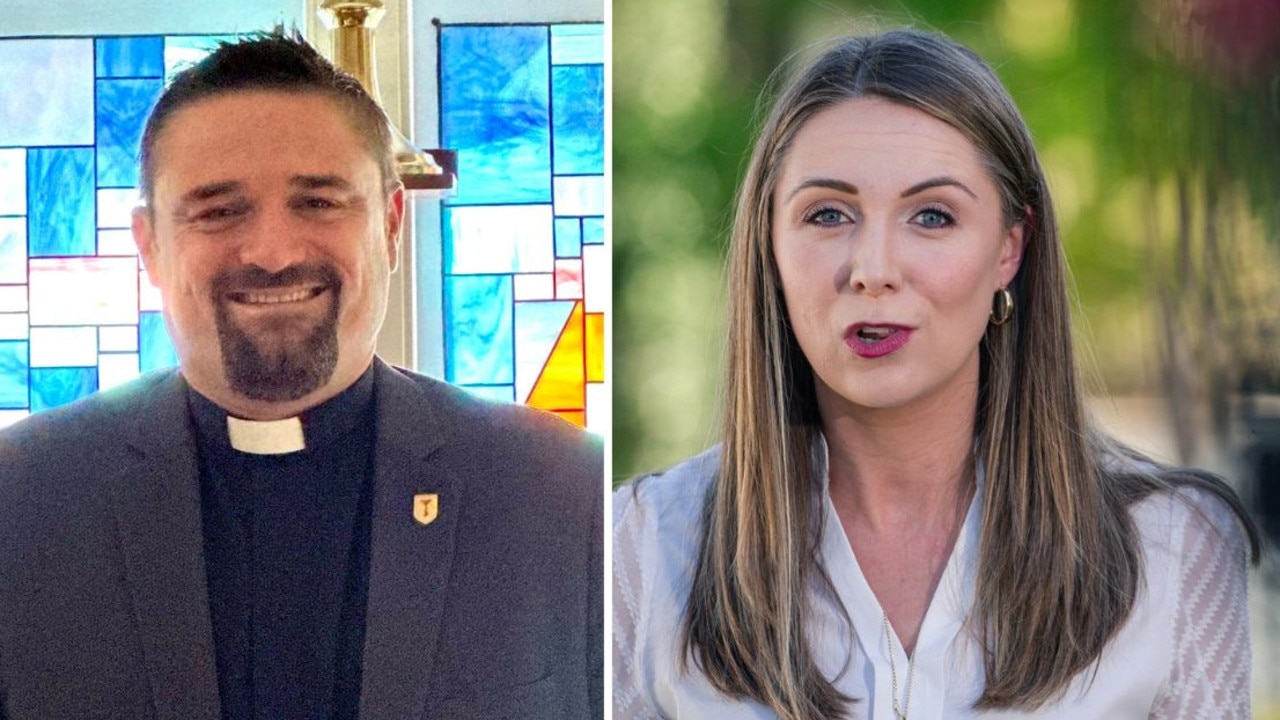State’s buoyant beef industry steer a path toward boom times
BUSINESS is booming for cattle producers, with several positive indicators for the industry as the leading players gather for Beef Australia week, writes Daryl Passmore.
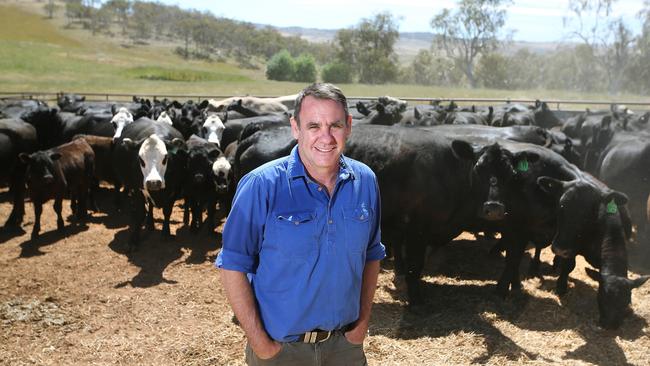
CM Insight
Don't miss out on the headlines from CM Insight. Followed categories will be added to My News.
QUEENSLAND’S buoyant beef industry is set to boom as the global hunger for top-quality, healthy meat continues to grow.
“Undoubtedly, the world will have an insatiable appetite for grass-fed beef going forward, Meat & Livestock Australia managing director Richard Norton says.
“There is an opportunity to market beef out of Queensland like red wine, promoting particular regions of origin based on taste and what they were fed on.”
The country’s cattle capital, Rockhampton, will host the triennial Beef Australia event for a week, beginning tomorrow, bringing together 90,000 people. And the message from industry leaders is a positive one.
“We’re telling people they should be quite optimistic in terms of global demand over the next three to five years,” Norton says.
Queensland produces half of Australia’s beef – and more than 60 per cent of exports. Our biggest markets are Japan, North America and Korea, with other parts of Asia including China growing.
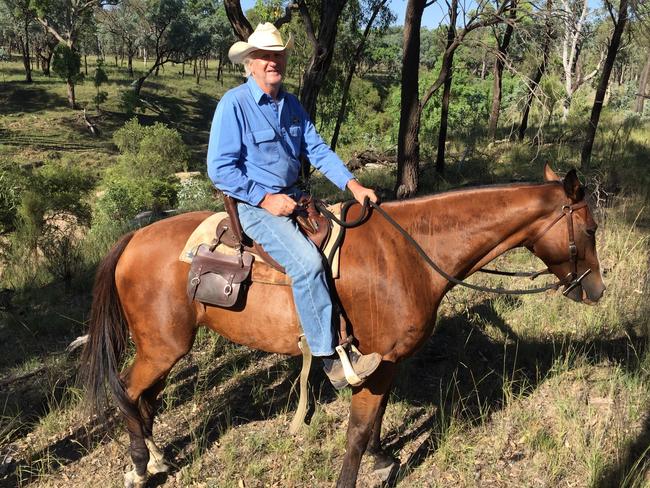
“There’s an enormous amount of confidence in our global meat markets,” Norton says.
The potential is limitless. Despite being the world’s third largest exporter, we produce only 2.6 per cent of the world’s beef.
And graziers are increasingly switched on to consumer demand and trends, reflected in growing moves to grass-fed and organic beef as well as top-quality breeds such as wagyu.
“It wouldn’t comprise even one per cent of global meat consumption at present,” Norton says.
“The Queensland beef industry has evolved from being custodians of the land and animals to really understanding what consumers want.”
And that includes “sustainability credentials’’. The industry has a target of being carbon-neutral by 2030.
“What we are finding is that producers can achieve efficiencies simultaneously with reducing emissions,” Norton says.
About 2000 graziers are involved in a trial program which turns harvested red algae into a concentrated feed. Results so far show it reduces methane by 80 per cent, while increasing efficiency by 3 per cent.
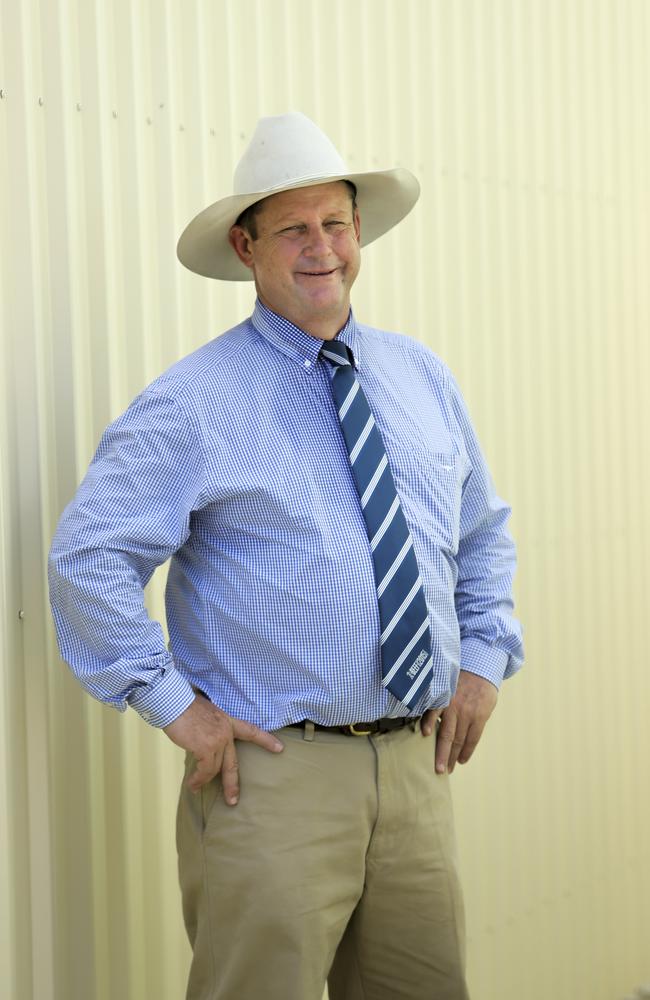
THE state’s beef farmers are rebuilding the herd after many regions emerged from four to five years of drought, which saw cattle numbers depleted.
Beef prices more than doubled between 2014 and last year but poor rain across many areas at the start of this year challenged stock rebuilding efforts as more cattle were sent to slaughter, pushing prices down to the lowest level since 2015.
Despite that, farm management deposits – a scheme where farmers can set aside pre-tax income in good years to build up cash reserves for tough times – have reached almost $1 billion.
“That’s the highest it’s ever been. It reflects the earnings of beef farmers over the last two or three years.”
Land prices are up too. “We are pushing the echelons of 10-year highs,” Norton says. “It’s a very positive industry to be in at the moment.”
He expects the trend of increasing ownership of cattle properties by big corporates and high-wealth individuals such as multi-billionaire individuals such as Gina Rinehart to continue as their resources enable them to take a long-term view and ride out the inevitable fluctuations caused by weather and exchange rates.
The big players include ASX-listed AACo, the North Australian Pastoral Company which is 80 per cent owned by the State Government-owned funds manager QIC. Consolidated Pastoral Company, currently owned by European private equity firm Terra Firma, is currently for sale and expected to fetch a record $1 billion for its 16 properties and 400,000 herd.
But Norton says the expertise and connection to the land means there will always be a place for the traditional family-owned beef farms.
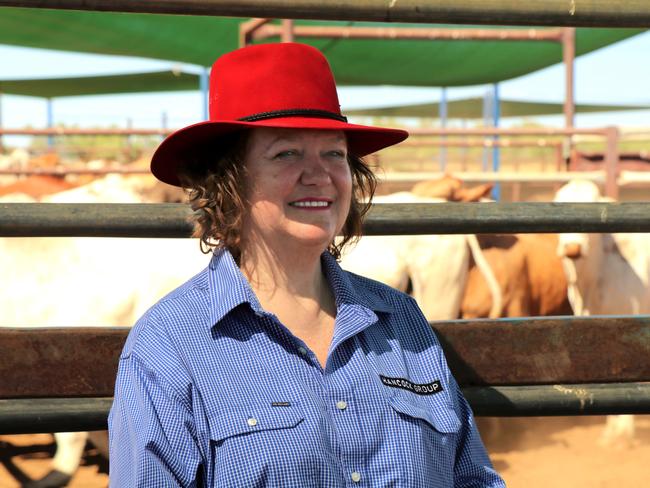
MEET THE BEEF BARONS:
GINA RINEHART
Australia’s richest person is a recent, but influential, entrant to the beef industry.
The resources tycoon, with a fortune put at $21.5 billion by Forbes magazine, bought the majority stake in the historic S Kidman & Co – with a 185,000-strong herd – just under 18 months ago and has continued to add to it since.
Rinehart now has 10 properties in Queensland through Kidman or her Hancock Prospecting company.
The 63-year-old is focused on the lucrative wagyu market and her most recent deal – the $50 million acquisition of three properties around Roma and Mitchell from pioneer breeder Wally Rea – gave her the world’s biggest full-blood and purebred wagyu herd with about 15,000 cattle.
TREVOR LEE
He is not as well-known as his wife, fashion designer Keri-Craig-Lee, but the Brisbane entrepreneur has built up the largest paddock-to-plate beef business in Australia and possibly globally.
Lee’s Australian Country Choice group runs 317,000 cattle across 54 owned, leased or managed properties covering 2 million hectares.
Their Cannon Hill meat facility processes 360,000 head a year, producing 50 million kilograms of meat and a further 25 million kilos of sausages, burgers, rissoles, stir fry and other products. ACC has had an exclusive deal to supply Coles supermarkets on the east coast for over four decades.
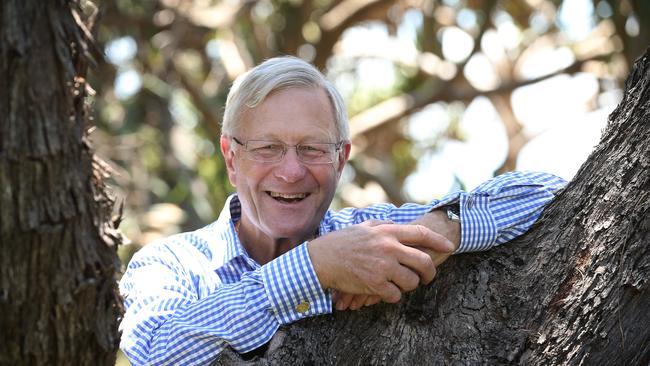
TIM FAIRFAX
Better recognised as a philanthropist and arts patron, the 71-year-old “Queensland Great’’ sold his holding in the media company which still bear’s the family name a decade ago. He and wife Gina now own 10 cattle properties producing top-quality grass-fed beef for the European market.
McDONALD FAMILY
Their link to the land dates back 191 years to the first shipment of cattle to Tasmania. Based in the Cloncurry district since the 1940s, they now own and operate 10 breeding, backgrounding and feedlot properties from Cape York to Toowoomba, exporting about 140,000kg a year to a dozen countries.
Bob McDonald, who headed the company with his brother, Don, died in March. Many other family members are involved including Susan who runs the Super Butcher retail chain in southeast Queensland.
ACTON FAMILY
Another group of the state’s grazier “royalty”, with a history dating back more than 150 years. The family built up a portfolio of seven properties and around 150,000 cattle in Central Queensland.
Following the tragic 2014 death of Graeme Acton in a camp drafting accident, his brother Evan, 65, has stepped back from a day-to-day operational role and most of the Actons’ stations are now operated under a joint venture with Trevor Lee’s ACC.
BRENDAN MENEGAZZO
The third generation of a family of Italian migrants who established a national fruit and vegetable operation before switching to beef, the 41-year-old Australia polo player is managing director of Stanbroke Pastoral Company, which he owns with New South Wales-based siblings Debra and David.
Stanbroke is one of the world’s biggest beef breeding, processing and distribution companies, owning eight North Queensland cattle stations and managing 46 in the state’s south with a 200,000-plus herd and a state-of-the -art processing facility in the Lockyer Valley.
HUGHES FAMILY
Peter Hughes started breeding Wagyu cattle a quarter century ago and his eye is now on turning the whole of his Hughes Pastoral’s 130,000 herd to the elite breed.
With sister company Georgina Pastoral, the company runs properties across 2.25 million hectares of northern and central Queensland and the Northern Territory. The family is expanded its organic operations.
PAMELA DEARMER
Queensland’s cattle queen heads the Western Grazing Company, one of Australia’s top 10 producers and one of the largest Brahman cross herds in the country. The business was started as a dairy farm on the Gold Coast and expanded into beef by her father Brian Oxenford. The suburb of Oxenford was named after Ms Dearmer’s great-great-grandfather William Robert Oxenford who migrated from England and established a homestead in the area in the late 1800s.
DAVID STATHAM
Home is a Gold Coast waterfront mansion but the 84-year-old’s $400 million fortune comes from the Sundown Pastoral Co, founded by his father Neil, which includes four cattle stations as well as cotton holdings. Mr Statham senior created and sold Australia’s largest prefab shed manufacturer Ranbuild.
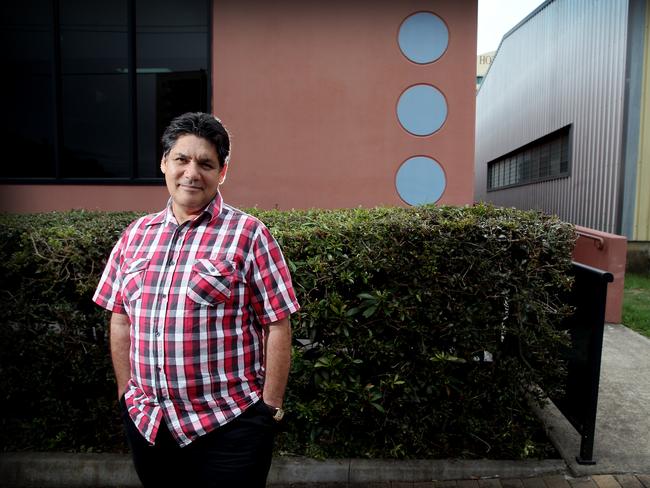
ROBERT McVICKER
The latest addition to the ranks of Queensland beef barons made his money from the Morris Corporation catering and logistics firm which services mining camps and, previously, military bases including serving the final meal to Iraqi dictator Saddam Hussein before his execution.
The 63-year-old bought a Goshu full-blood wagyu herd in Victoria last September and moved it to his Shamrock Vale Station near Beaudesert.
Other notables include: Birdsville Hotel owners and organic beef breeders David and Nell Brook whose five properties straddle a massive 3.5 million hectares of remote southwest Queensland and South Australia; former Cloncurry mayor Andrew Daniels and his family; the Camm family; helicopter crash survivor Charles Lund and his family; and Beef Australia
chairman Blair Angus.
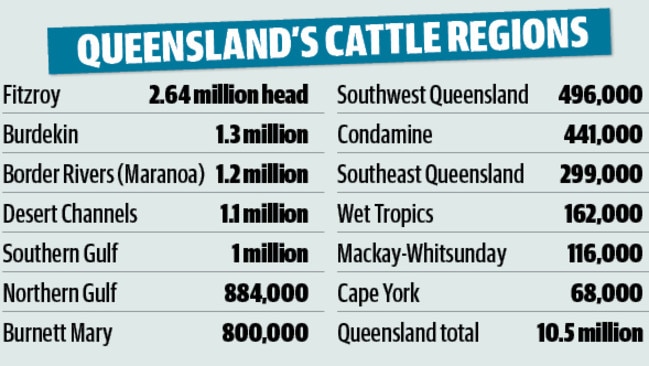
FAST FACTS
. Queensland has 47% of Australia’s beef herd
. The value of beef and veal production in 2017-18 is forecast at $5.4 billion. It has increased 13 per cent in five years
. The value of meat processing this year is forecast at $2.4 billion – a 9 per cent rise in five years
. Beef and veal accounts for 27 per cent of Queensland’s agriculture
. Queensland has 8466 beef properties, 47 per cent of all farms in the state
. Queensland is the country’s largest beef producer and exporter with 48% of the total
. 1.1 million tonnes of beef and veal is expected to be produced this year
. Queensland accounts for 60% of Australian beef exports, worth $4.1 billion
. The biggest markets are Japan (34%), North America (20%), Korea (17%)

